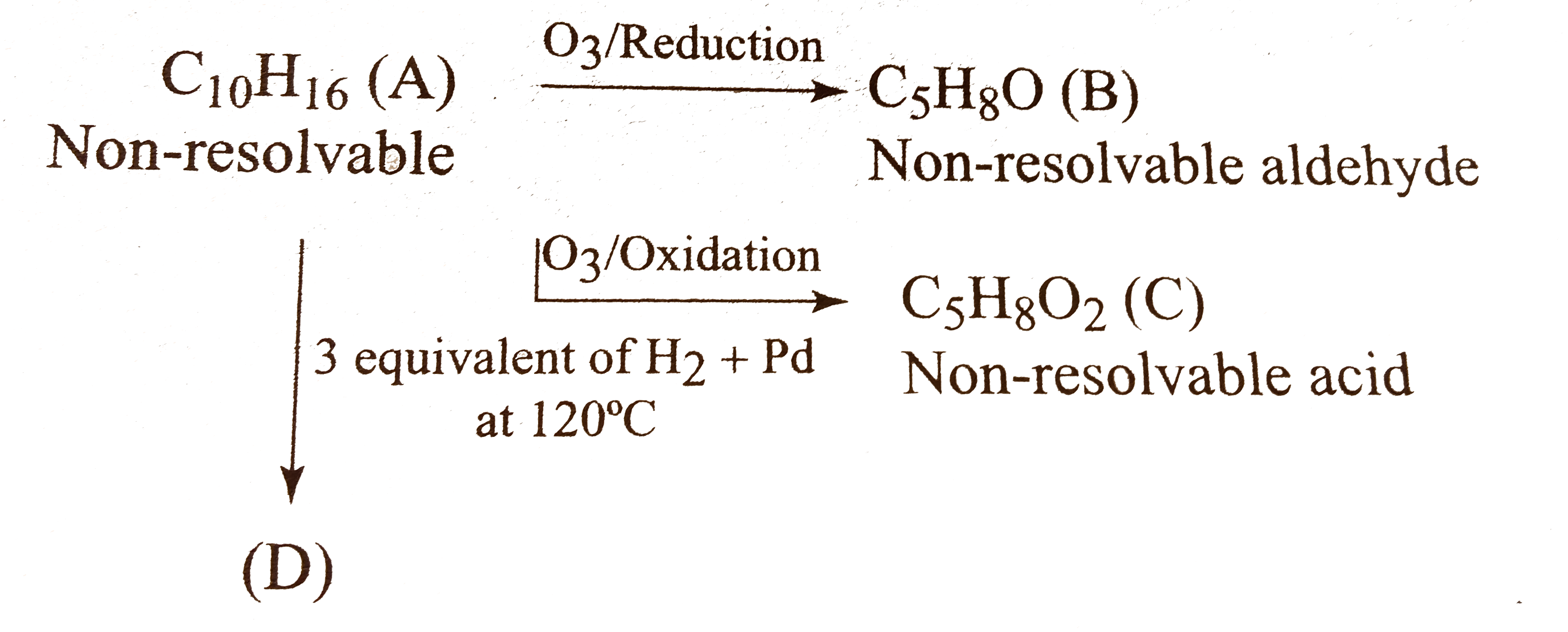Write the electronic structures of : (a) CO , (b) NO, (c) HF ,(d) HCl, based upon Molecular orbital (MO) diagram
To find the electronic structures of CO, NO, HF, and HCl based on molecular orbital (MO) theory, we will follow these steps:
Step 1: Determine the total number of valence electrons for each molecule.
- CO (Carbon Monoxide): Carbon has 4 valence electrons, and Oxygen has 6. Total = 4 + 6 = 10 electrons.
- NO (Nitric Oxide): Nitrogen has 5 valence electrons, and Oxygen has 6. Total = 5 + 6 = 11 electrons.
- HF (Hydrogen Fluoride): Hydrogen has 1 valence electron, and Fluorine has 7. Total = 1 + 7 = 8 electrons.
- HCl (Hydrogen Chloride): Hydrogen has 1 valence electron, and Chlorine has 7. Total = 1 + 7 = 8 electrons.
Step 2: Fill the molecular orbitals according to the number of electrons.
The order of filling molecular orbitals for diatomic molecules (like CO and NO) typically follows this pattern:
1. σ1s
2. σ1s*
3. σ2s
4. σ2s*
5. σ2p (or σ2pz)
6. π2p (or π2px and π2py)
7. π2p* (or π2px* and π2py*)
8. σ2p* (or σ2pz*)
(a) CO (10 electrons)
1. σ1s (2)
2. σ1s* (2)
3. σ2s (2)
4. σ2s* (2)
5. σ2p (2)
Electronic structure: (σ1s)² (σ1s*)² (σ2s)² (σ2s*)² (σ2p)²
(b) NO (11 electrons)
1. σ1s (2)
2. σ1s* (2)
3. σ2s (2)
4. σ2s* (2)
5. σ2p (2)
6. π2p (1)
Electronic structure: (σ1s)² (σ1s*)² (σ2s)² (σ2s*)² (σ2p)² (π2p)¹
(c) HF (8 electrons)
1. σ1s (2)
2. σ1s* (2)
3. σ2s (2)
4. σ2s* (2)
Electronic structure: (σ1s)² (σ1s*)² (σ2s)² (σ2s*)²
(d) HCl (8 electrons)
1. σ1s (2)
2. σ1s* (2)
3. σ2s (2)
4. σ2s* (2)
Electronic structure: (σ1s)² (σ1s*)² (σ2s)² (σ2s*)²
Summary of Electronic Structures:
- CO: (σ1s)² (σ1s*)² (σ2s)² (σ2s*)² (σ2p)²
- NO: (σ1s)² (σ1s*)² (σ2s)² (σ2s*)² (σ2p)² (π2p)¹
- HF: (σ1s)² (σ1s*)² (σ2s)² (σ2s*)²
- HCl: (σ1s)² (σ1s*)² (σ2s)² (σ2s*)²
- CO (Carbon Monoxide): Carbon has 4 valence electrons, and Oxygen has 6. Total = 4 + 6 = 10 electrons.
- NO (Nitric Oxide): Nitrogen has 5 valence electrons, and Oxygen has 6. Total = 5 + 6 = 11 electrons.
- HF (Hydrogen Fluoride): Hydrogen has 1 valence electron, and Fluorine has 7. Total = 1 + 7 = 8 electrons.
- HCl (Hydrogen Chloride): Hydrogen has 1 valence electron, and Chlorine has 7. Total = 1 + 7 = 8 electrons.
The order of filling molecular orbitals for diatomic molecules (like CO and NO) typically follows this pattern:
2. σ1s*
3. σ2s
4. σ2s*
5. σ2p (or σ2pz)
6. π2p (or π2px and π2py)
7. π2p* (or π2px* and π2py*)
8. σ2p* (or σ2pz*)
1. σ1s (2)
2. σ1s* (2)
3. σ2s (2)
4. σ2s* (2)
5. σ2p (2)
Electronic structure: (σ1s)² (σ1s*)² (σ2s)² (σ2s*)² (σ2p)²
1. σ1s (2)
2. σ1s* (2)
3. σ2s (2)
4. σ2s* (2)
5. σ2p (2)
6. π2p (1)
1. σ1s (2)
2. σ1s* (2)
3. σ2s (2)
4. σ2s* (2)
1. σ1s (2)
2. σ1s* (2)
3. σ2s (2)
4. σ2s* (2)
- CO: (σ1s)² (σ1s*)² (σ2s)² (σ2s*)² (σ2p)²
- NO: (σ1s)² (σ1s*)² (σ2s)² (σ2s*)² (σ2p)² (π2p)¹
- HF: (σ1s)² (σ1s*)² (σ2s)² (σ2s*)²
- HCl: (σ1s)² (σ1s*)² (σ2s)² (σ2s*)²
Topper's Solved these Questions
- CHEMICAL BONDING BOOK - MOTIONCHAPTER - CHEMICAL BONDING EXERCISE - EXERCISE -4 LEVEL-I
39 Videos
- CHEMICAL BONDING BOOK - MOTIONCHAPTER - CHEMICAL BONDING EXERCISE - EXERCISE -4 LEVEL-II
40 Videos
- CHEMICAL BONDING BOOK - MOTIONCHAPTER - CHEMICAL BONDING EXERCISE - EXERCISE -2 LEVEL II
71 Videos
- CARBOXYLIC ACIDBOOK - MOTIONCHAPTER - CARBOXYLIC ACIDEXERCISE - Exercise - 4 (LEVEL - 2 )
22 Videos
- CHEMICAL EQUILIBRIUMBOOK - MOTIONCHAPTER - CHEMICAL EQUILIBRIUMEXERCISE - Exercise - 4
20 Videos
Similar Questions
Write the structures of A, B and C in the following :

View SolutionWrite the structure of lettered compounds (A,B,C,D)

View SolutionWrite molecular, electronic and structural formulae of ethene.
View SolutionWrite the structures of A, B, C and D in the following reactions :

View SolutionWrite the structures of A, B, C and D in the following reactions :
View Solution
a. Write all the possible structures of (A),(B) and (C)
b. Write all the possible structures of (A),(B), and (C) if all are resolvable.
c. Write the possible structures of (D) in both cases.
View Solution(A), (B) and (C ) are three non-cylic funtional isomers of a carbonyl compound with molecular formula C4H8O. Isomers (A) and (C ) give positive Tollen's test whereas isomer (B) does not give Tollens' test but gives positive iodoform test. Isomers (A) and (B) on reduction with Zn(Mg) | conc. HCl give the same product (D).
(a) Write the structures of (A), (B) ,(C) and (D).
(b) Out of (A), (B) and (C ) isomers, which one is least reactive towards addition of HCN ?
View Solution(A), (B) and (C) are three non-cyclic functional isomers of a carbonyl compound with molecular formula C4H8O. Isomers (A) and (C) give positive Tollens' test whereas isomer (B) does not give Tollens' test but gives positive Iodoform test. Isomers (A) and (B) on reduction with Zn(Hg)/conc. HCl give the same product (D).
(a) Write the structures of (A), (B), (C) and (D).
(b) Out of (A), (B) and (C) isomers, which one is least reactive towards addition of HCN ?
View SolutionWrite the structures of A, B, C, D and E in the following reactions :

View SolutionWrite the molecular and structural formulae of :
(a) Thiosulphuric acid
(b) Dithionous acid
View Solution
